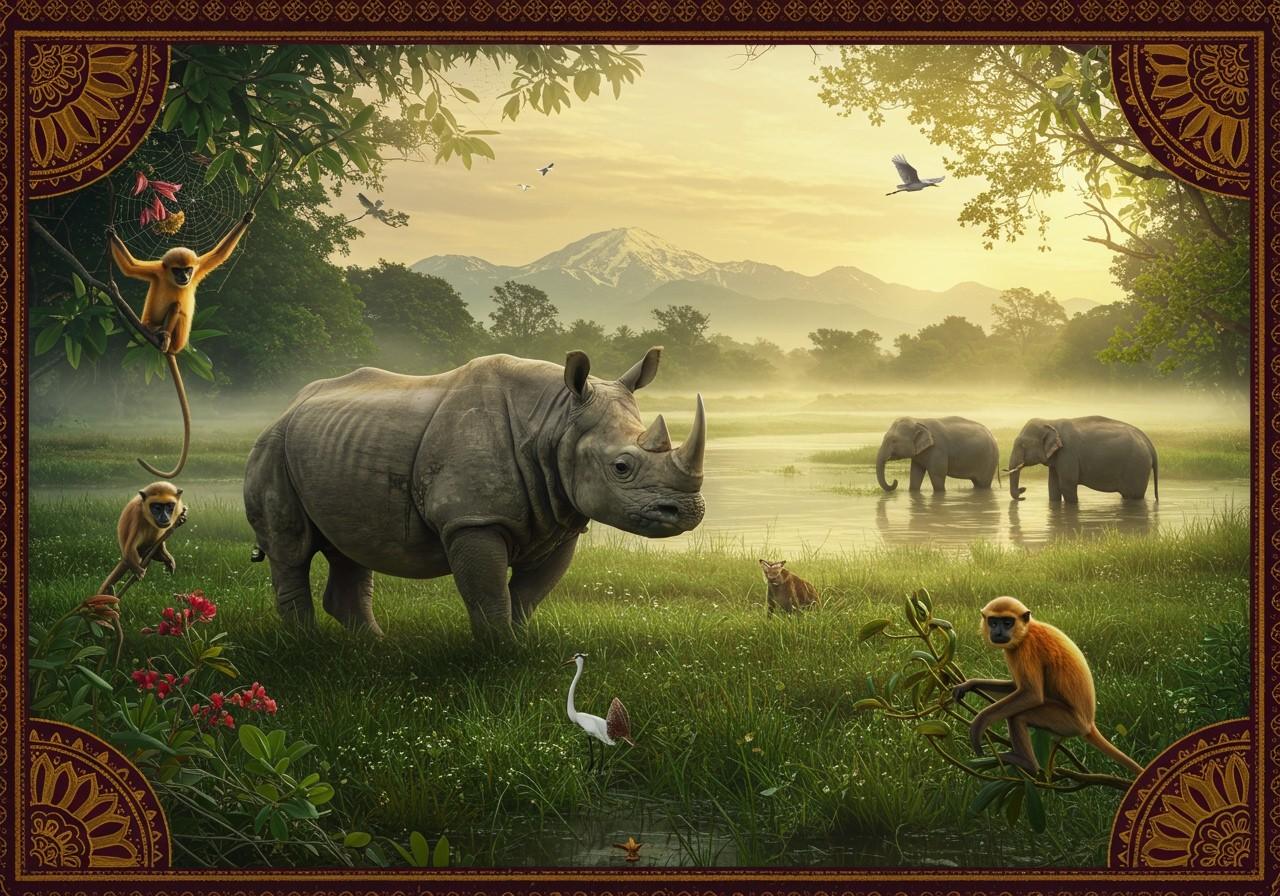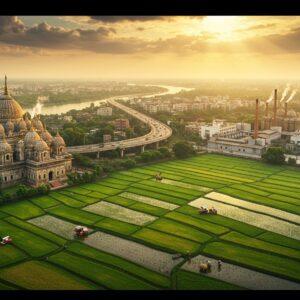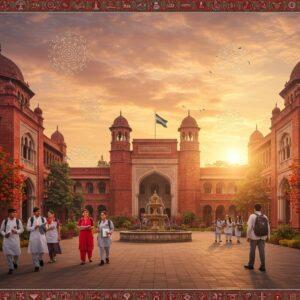
Embark on an unforgettable journey to explore Assam’s breathtaking natural beauty through its magnificent national parks and wildlife sanctuaries. Nestled in Northeast India, Assam is renowned for its rich biodiversity, serene landscapes, and unique wildlife. This guide delves into the state’s most celebrated national parks and sanctuaries, offering insights into the diverse flora and fauna, cultural significance, and essential travel tips.
Exploring Assam’s Eight National Parks
Assam is home to a remarkable eight national parks, each a testament to the region’s incredible biodiversity. These protected areas offer a haven for a wide array of species and provide a glimpse into the intricate ecosystems that thrive within them.
Kaziranga National Park: A UNESCO World Heritage Site
Discover Kaziranga National Park, a renowned UNESCO World Heritage site, embodying Assam’s natural splendor. Home to the largest population of the Indian one-horned rhinoceros, Kaziranga spans over 430 square kilometers of grassland, wetlands, and forests, hosting diverse wildlife, including elephants, tigers, and water buffaloes.
- Significance of Brahmaputra River: The Brahmaputra River plays a crucial role in shaping Kaziranga’s unique ecosystem, providing vital water sources and influencing the park’s diverse habitats. Its annual floods also contribute to the rejuvenation of the grasslands, supporting the rich biodiversity found within the park.
- History: Established in 1905 to protect dwindling rhinoceros populations, Kaziranga has become a global icon for conservation success. Its history is intertwined with the efforts to preserve this magnificent species and the delicate balance of its natural environment.
- Activities: Embark on thrilling jeep and elephant safaris for up-close encounters with the park’s incredible wildlife. These guided tours provide an immersive experience, allowing visitors to witness the animals in their natural habitat while learning about their behavior and conservation status.
- Best Season to Visit: The ideal time to visit Kaziranga is from November to April when the weather is pleasant and dry, offering optimal conditions for wildlife viewing and exploration.
- Accommodation: Choose from a range of eco-friendly lodges and campsites for an immersive experience in nature. These accommodations provide comfortable stays while minimizing environmental impact and supporting sustainable tourism practices.
Manas National Park: A Biosphere Reserve and Tiger Reserve
Uncover the beauty of Manas National Park, a UNESCO Natural World Heritage site, Tiger Reserve, and Biosphere Reserve. Situated at the foothills of the Eastern Himalayas, this expansive park covers 950 square kilometers, supporting diverse species like the Assam roofed turtle, pygmy hog, and golden langur.
- Conservation Efforts: Manas National Park plays a crucial role in protecting endangered species like the Bengal tiger and Asian elephant. Ongoing conservation initiatives focus on habitat preservation, anti-poaching measures, and community involvement to ensure the long-term survival of these iconic animals.
- Activities: Experience the thrill of river rafting on the Manas River and enjoy birdwatching opportunities with over 450 avian species recorded in the park. These activities offer unique perspectives on the park’s diverse ecosystems and allow visitors to connect with nature in exciting ways.
- Cultural Significance: Manas National Park holds deep cultural significance for local communities, particularly the Bodo people, who have a long-standing relationship with the land and its wildlife. Their traditional practices and beliefs are intertwined with the park’s natural heritage.
- Best Season to Visit: Plan your visit to Manas National Park between October and April for the most favorable weather conditions and increased chances of wildlife sightings.
- Accommodation: Choose from a selection of forest lodges and eco-camps that blend comfort with nature, offering a unique and immersive stay within the park’s boundaries.
Nameri National Park: A Birdwatcher’s Paradise
Explore the serene landscapes of Nameri National Park, nestled in the foothills of the Eastern Himalayas. Spanning 200 square kilometers, Nameri is known for its pristine riverine forests and rich biodiversity, particularly its unique avian population.
- Unique Avian Population: Nameri National Park is a haven for bird enthusiasts, with sightings of endangered species like the white-winged wood duck and great pied hornbill. Its diverse habitats support a wide array of birdlife, making it a prime destination for birdwatching tours.
- Activities: Experience the thrill of river rafting and angling in the Jai Bhoroli River, which flows through the heart of the park. These activities offer exciting ways to explore the park’s natural beauty and engage with its aquatic ecosystems.
- Conservation Efforts: Nameri is actively involved in protecting endangered species like the wild dog and clouded leopard. Conservation initiatives focus on habitat restoration, anti-poaching patrols, and community engagement to safeguard these vulnerable animals.
- Community Involvement: Community-based conservation efforts involving local tribes play a vital role in Nameri’s conservation success. The participation of indigenous communities ensures the sustainable management of the park’s resources and the preservation of its cultural heritage.
- Best Season to Visit: The optimal time to visit Nameri National Park is during the dry season, from November to April, when weather conditions are ideal for outdoor activities and wildlife viewing.
Dibru-Saikhowa National Park: A Unique Ecosystem
Delve into the unique ecosystem of Dibru-Saikhowa, one of Assam’s largest national parks, covering 340 square kilometers. Located on the floodplains of the Brahmaputra and Dibru Rivers, this park is a haven for aquatic and avian species.
- Rich Birdlife: Dibru-Saikhowa boasts an impressive array of over 500 bird species, including the Bengal florican and black-breasted parrotbill. Birdwatchers from around the world flock to this avian paradise to witness its diverse and vibrant birdlife.
- Diverse Habitats: The park encompasses a variety of habitats, including semi-evergreen forests, grasslands, and wetlands, creating a rich mosaic of ecosystems that support a wide range of species.
Orang National Park: The Mini Kaziranga
Unveil the hidden gem of Orang National Park, often referred to as the “Mini Kaziranga.” Covering 79 square kilometers, this park is renowned for its population of the Indian one-horned rhinoceros.
- Diverse Habitats: Orang National Park encompasses a variety of habitats, including wetlands, grasslands, and forests, providing a haven for diverse wildlife.
- Wildlife: The park is not only home to the iconic one-horned rhinoceros but also supports populations of Bengal tigers, pygmy hogs, and various other species.
Pobitora Wildlife Sanctuary: High Density of Rhinos
Experience the compact yet biodiverse Pobitora Wildlife Sanctuary, located just 50 kilometers from Guwahati. Spanning 38 square kilometers, this sanctuary boasts the highest density of Indian one-horned rhinoceroses in the world.
- Habitats: Pobitora’s grasslands and wetlands provide the perfect environment for the one-horned rhinoceros, allowing visitors to observe these magnificent creatures up close.
- Wildlife: In addition to rhinos, the sanctuary is home to wild boars, leopards, and a variety of migratory birds, adding to its rich biodiversity.
Assam’s Wildlife Sanctuaries: Beyond National Parks
Assam’s natural wonders extend beyond its national parks, with 17 wildlife sanctuaries contributing to the state’s rich biodiversity. These sanctuaries protect a variety of species, including elephants, bison, and endangered river dolphins, offering further opportunities for wildlife enthusiasts to explore and appreciate Assam’s natural heritage.
Sacred Offerings for Temple Visits in Assam
Enhance your spiritual journey in Assam with sacred offerings from Poojn.in. When visiting revered temples like the Kamakhya Temple during your wildlife and nature tours, ensure a meaningful experience with essential puja items.
Poojn.in offers a curated collection for temple visits, including:
- Pure cotton gamcha and angavastra
- Traditional brass diyas
- Pure ghee
- Fresh coconuts and fruits
- Red cloth and sindoor
- Incense sticks and dhoop
These items demonstrate respect for local customs and temple requirements. Poojn.in ensures all products meet temple standards, conveniently packaged for travel. We deliver across Assam, including major cities near wildlife sanctuaries. For your temple visits, order puja samagri at www.poojn.in.
Also check out these related posts:
- Dhekiakhowa Bornamghar: Exploring Assamese Spiritual Heritage
- Assam’s Sacred Sites: Ugratara Devalaya and Other Spiritual Journeys
Conclusion
Assam’s national parks and wildlife sanctuaries offer an unparalleled glimpse into the region’s rich and diverse natural beauty. From the expansive Dibru-Saikhowa National Park to the compact yet vibrant Pobitora Wildlife Sanctuary, each destination holds unique experiences and breathtaking wildlife encounters. Whether you are a bird enthusiast, a wildlife lover, or simply seeking to connect with nature, Assam’s parks provide the perfect backdrop for your adventures. Embark on a journey to Assam’s wilderness and create unforgettable memories while embracing the region’s natural heritage.


